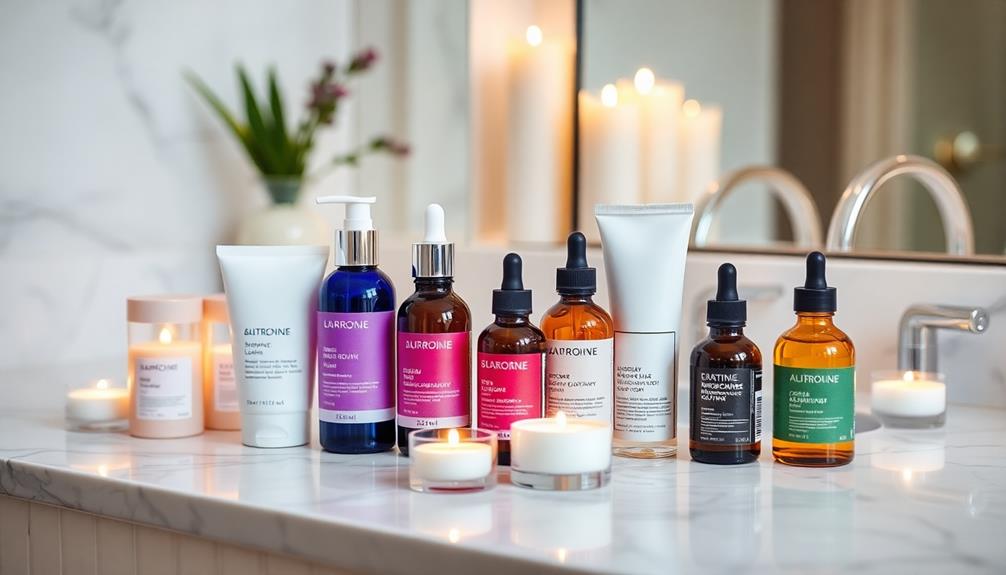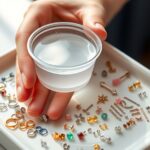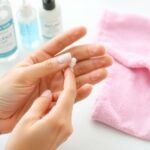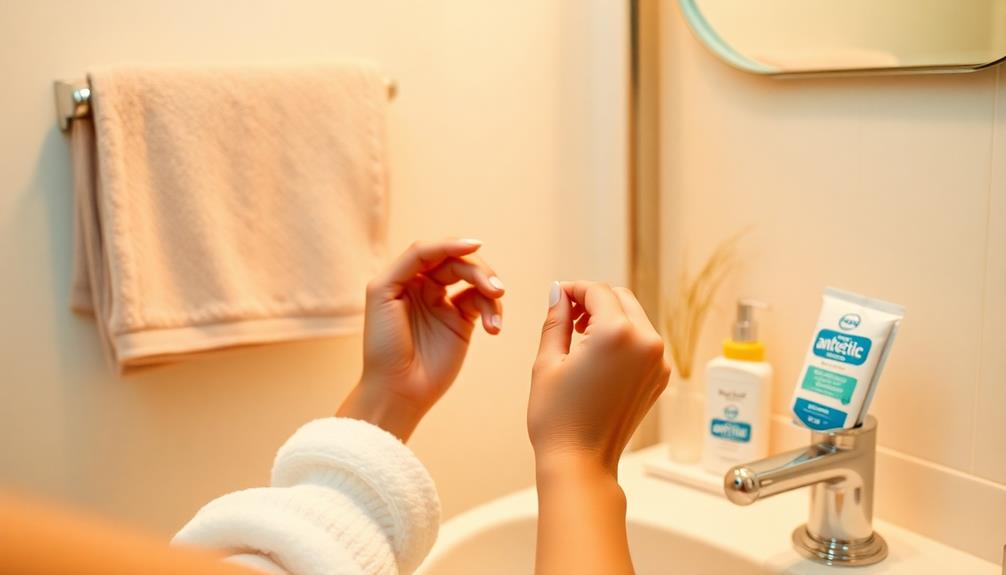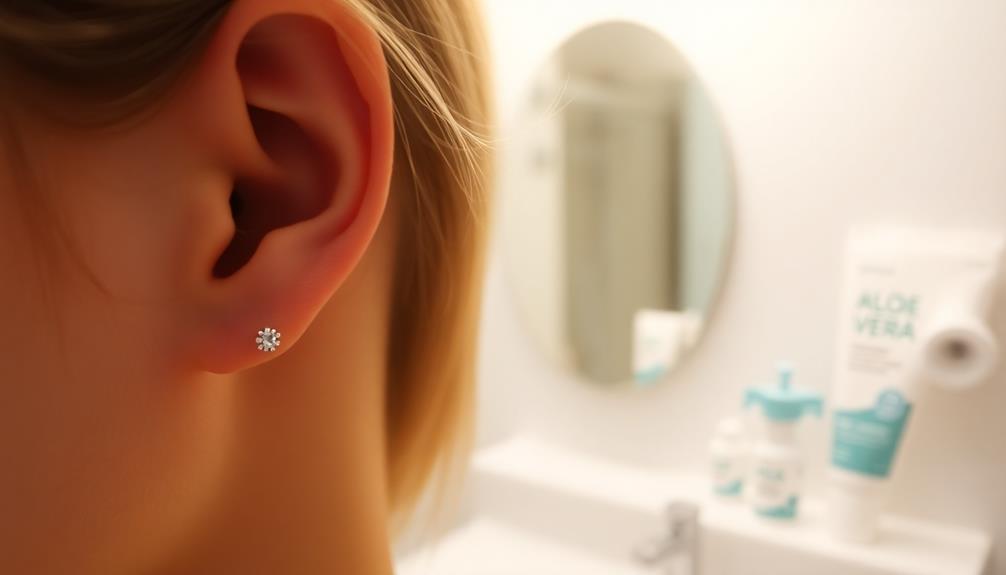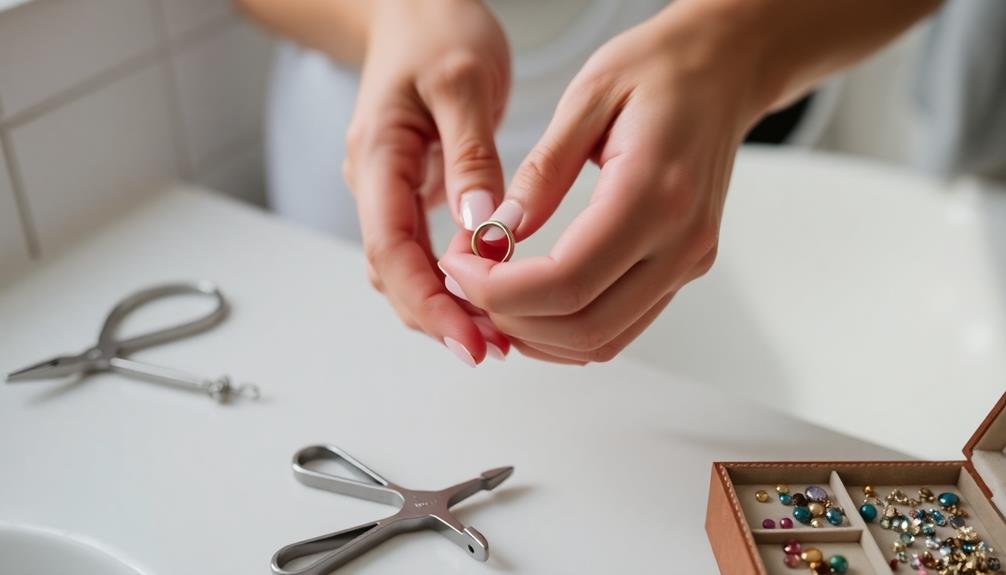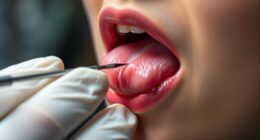When it comes to aftercare products, you'll want to focus on gentle, fragrance-free options for both cleansing and moisturizing. Use Liquid Gold Dial Soap to keep your tattoo clean and avoid harsh or scented soaps that can irritate healing skin. For moisturizers, lightweight, fragrance-free brands like CeraVe or Hustle Butter are best. Steer clear of heavy products like petroleum jelly, as they can suffocate your tattoo and lead to complications. Following these guidelines will help guarantee proper healing and vibrant results. Stick around to discover even more tips for maintaining your tattoo's beauty and integrity!
Key Takeaways
- Use gentle, unscented soaps like Liquid Gold Dial Soap to prevent irritation and support tattoo healing.
- Avoid fragrance-infused and harsh soaps which can disrupt healing and increase infection risk.
- Opt for lightweight, fragrance-free moisturizers to hydrate without suffocating healing skin.
- Steer clear of heavy barrier products like Aquaphor that can trap dirt and hinder recovery.
- Implement a gentle cleaning routine and monitor for signs of irritation or infection during the healing process.
Recommended Soap Products
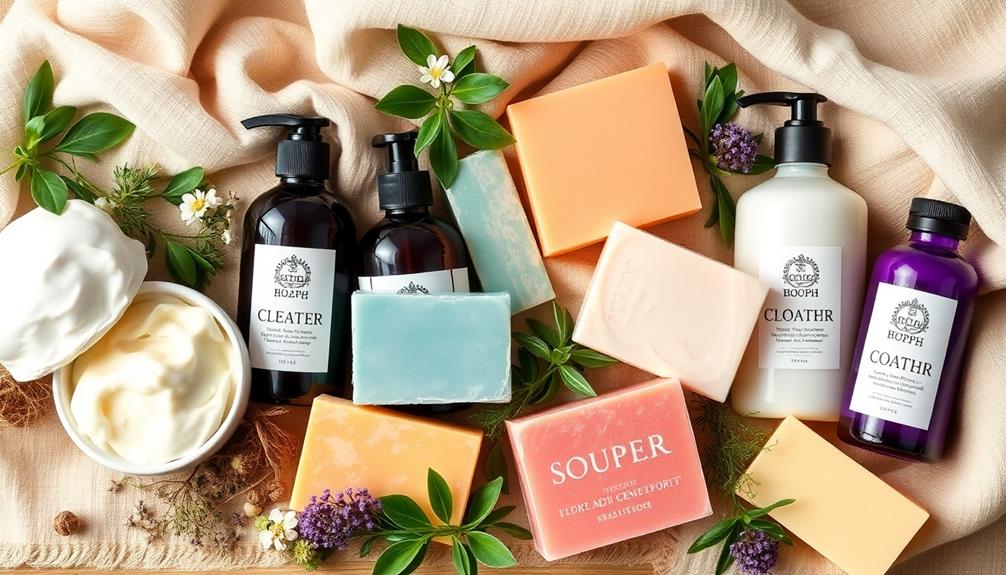
When it comes to choosing soap for tattoo aftercare, you'll want to pick products that won't irritate your skin. Liquid Gold Dial Soap stands out as a great option due to its light, natural, and antibacterial properties, and you can usually find it for just $1-$2 in stores. This non-scented soap is essential for sensitive skin, as it helps prevent irritation during the healing process of your new tattoo.
When selecting soap, look for gentle formulations that maintain your skin's natural oils and pH balance. Artisanally crafted soaps often fit this description, providing a mild cleansing experience that won't disrupt the healing process.
It's vital to avoid over-washing your tattoo, as excessive cleaning can hinder recovery. Instead, wash only when visible dirt or sweat is present.
Additionally, opt for facial soaps that are fragrance-free and free of microbeads or exfoliants. These ingredients can irritate freshly tattooed skin, so sticking to non-scented options is wise.
Soaps to Avoid

When caring for your tattoo, you should steer clear of fragrance-infused soaps, as they can lead to irritation and burning sensations on healing skin.
Over-washing with harsh soaps can also disrupt the healing process, leaving your tattoo vulnerable to infections.
Stick to gentle, unscented options to keep your skin healthy and promote proper healing.
Fragrance-Infused Soaps Risks
Why risk your tattoo's healing with fragranced soaps? Using fragrance-infused soaps on fresh tattoos can lead to irritation and even skin infections. Many clients report burning sensations and adverse skin reactions after washing with soaps that contain artificial fragrances.
When your skin is healing, it's essential to keep it as calm as possible. Additionally, just like dental health practices can greatly impact overall well-being, choosing the right aftercare products is critical for maintaining skin integrity.
Fragranced soaps can disrupt the healing process, especially if you wash your tattoo too frequently. Remember, excessive washing can exacerbate irritation, which is the last thing you want for your new ink. It's important to only wash your tattoo when there's visible dirt or sweat.
For ideal tattoo aftercare, opt for non-scented, gentle soaps. These products minimize the risk of skin irritation and promote better healing. By avoiding fragrance-infused soaps, you're giving your tattoo the best chance to heal properly without unnecessary complications.
Prioritize your skin's health and choose wisely—your tattoo deserves it!
Over-Washing Consequences
Over-washing your tattoo can greatly hinder the healing process and lead to unwanted complications. When you wash your tattoo too often, you disrupt its natural healing, which can result in irritation and prolonged recovery times. Excessive washing strips your skin of essential natural oils, causing dryness and making your tattoo more susceptible to infections.
Many clients report that using fragranced soaps during this time can trigger burning sensations or even allergic reactions. Instead of adhering to a strict washing schedule, it's best to wash your tattoo only when you see visible dirt or sweat. Moderation is key—over-washing isn't just unnecessary; it's harmful.
When you do wash, make sure to do so gently. Use diluted unscented soap to cleanse the area without adding to irritation. This method helps maintain your tattoo's integrity while supporting its healing.
Effective Moisturizers
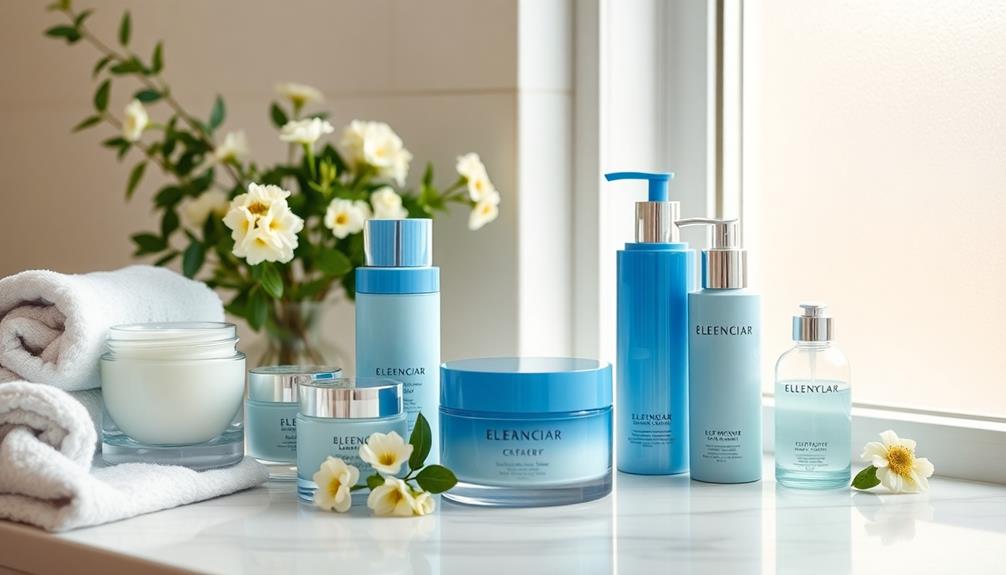
Effective moisturizers play an essential role in your skin's recovery after getting a tattoo. They help promote tattoo healing and prevent complications.
Look for effective moisturizers that are fragrance-free, as these are lightweight and breathable, making them perfect for sensitive skin. Brands like Curel are known for their gentle formulas that hydrate without causing irritation.
Another great option is salves and balms specifically designed for tattoos. Confirm these products are also fragrance-free and sourced from reputable tattoo artists to assure safety and effectiveness.
Incorporating vitamin E into your aftercare routine can greatly enhance skin rejuvenation. This powerful ingredient promotes healing and moisture retention, making your tattoo recovery smoother.
Moisturizers to Avoid
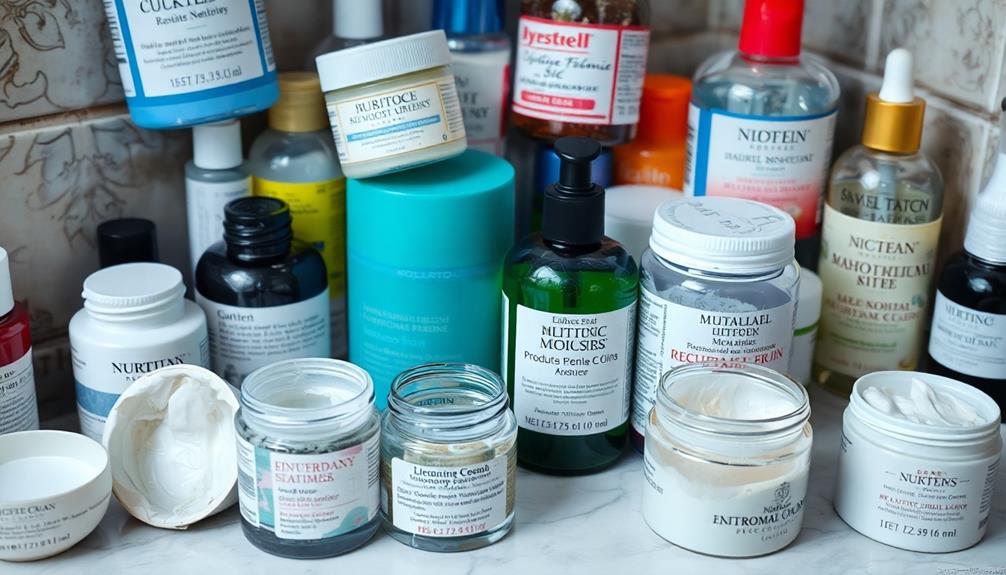
When it comes to tattoo aftercare, there are moisturizers you should steer clear of.
Heavy barrier products can suffocate your skin and slow down the healing process, while fragranced lotions may irritate your tattoo and increase infection risks.
It's crucial to choose your products wisely to guarantee your tattoo heals properly.
Heavy Barrier Products
In the domain of tattoo aftercare, it's crucial to steer clear of heavy barrier products like Aquaphor and petroleum jelly. These products can suffocate your healing tattoos, potentially leading to ink loss and skin breakouts due to their occlusive nature.
Their thick consistency traps dirt and germs, increasing the risk of skin infections while hindering your overall recovery process.
Consider the following risks associated with heavy barrier products:
- Soggy Scabs: The occlusive properties prevent necessary oxygen from reaching your skin, leading to scab sogginess and irritation.
- Infection Risks: By trapping dirt, these products create a perfect environment for bacteria to thrive, heightening the risk of infections on your healing tattoos.
- Allergic Reactions: Many heavy barrier products can trigger allergic reactions, further complicating your tattoo healing process.
For effective tattoo aftercare, opt for fragrance-free lotion instead. These alternatives allow your skin to breathe while still providing the moisture it needs without the drawbacks posed by heavy barrier products.
Prioritize your tattoo's health and recovery by making informed choices.
Fragranced Lotion Risks
Using fragranced lotions on healing tattoos can lead to a host of complications that hinder recovery. These products often contain artificial fragrances that can irritate sensitive skin, especially on open wounds.
When you apply fragranced lotions to your tattoo, you risk allergic reactions, which may result in rashes and burning sensations. This discomfort can make you more prone to scratching, potentially damaging your tattoo.
Moreover, many of these moisturizers include irritants that are unsuitable for post-tattoo care, where the skin needs gentle treatment. The excessive itching caused by these products can disrupt the healing process and increase the likelihood of infections.
For ideal recovery, it's essential to avoid any products that might exacerbate skin conditions.
Dermatologists recommend fragrance-free moisturizers specifically designed for sensitive and healing skin. These alternatives help guarantee effective healing while minimizing the risk of adverse skin reactions.
By choosing the right moisturizer, you'll support your tattoo's recovery and maintain its beauty without the complications that come with fragranced lotions.
Prioritize your skin's health with gentle, fragrance-free options for the best results.
Tattoo Aftercare Guidelines
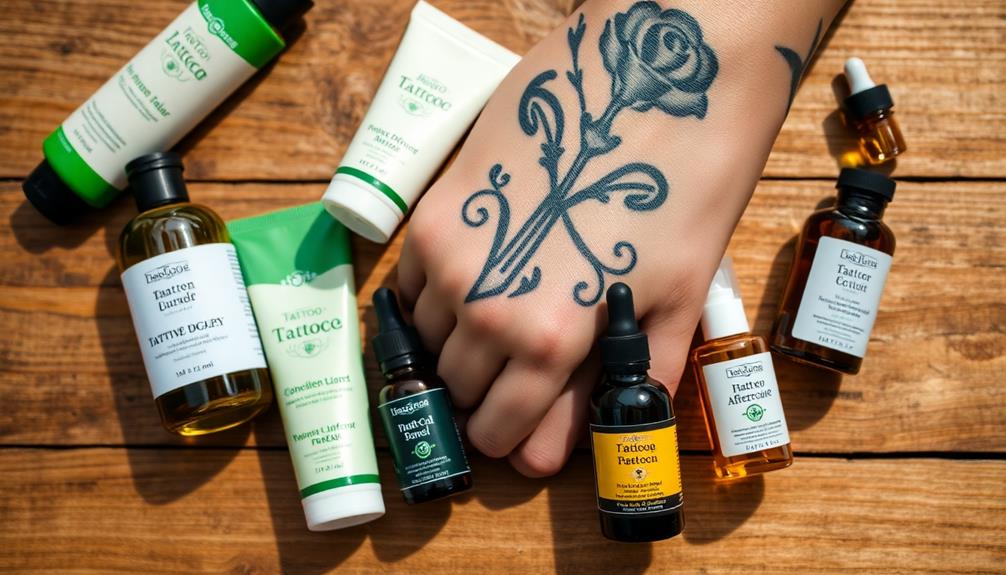
Caring for your new tattoo is essential to guarantee it heals properly and looks great for years to come. Humor can play a role in enhancing the experience, especially for seniors embracing this form of self-expression; some may even find joy in sharing their tattoo stories through seniors texting humor.
Here are some key tattoo aftercare guidelines to follow:
- Gentle Washing: Use an unscented soap, like Liquid Gold Dial Soap, to gently wash the tattooed area. This helps maintain cleanliness and prevents infection.
- Moisturize: After removing the bandage, apply a thin layer of fragrance-free lotion, such as Lubriderm or Cerave, to keep your skin hydrated. Make sure not to over-moisturize, as this can irritate the skin.
- Protect: Avoid using tight clothing, swimming, and sun exposure until your tattoo is fully healed, which generally takes 10 days to a month. Protecting your tattoo will help it heal without complications.
Throughout the healing process, monitor your skin's responses and adjust your products accordingly.
Everyone's skin reacts differently, so listen to your body. By following these guidelines, you'll help guarantee your tattoo looks vibrant and stays healthy for years to come.
Long-Term Tattoo Care

How can you guarantee your tattoo remains as vibrant as the day it was inked? Long-term tattoo care is essential for preserving both the artwork and your skin's health.
Start by washing your tattoo 1-2 times a day for at least two weeks. This routine helps maintain cleanliness and prevent infection during the significant tattoo healing phase.
Once your tattoo is fully healed, it's important to protect it from sun exposure. UV rays can fade the ink and damage your skin, so applying a broad-spectrum mineral sunscreen, like Mad Rabbit SPF 30, becomes necessary. This will preserve the vibrancy of your tattoo and shield your skin from harmful effects.
Hydration is another key aspect of long-term care. Regularly applying moisturizers will keep the tattooed area from drying out and flaking.
Pay attention to any signs of irritation or infection, such as increased redness or swelling. If you notice these symptoms, consult your tattoo artist or a professional.
Recommended Products
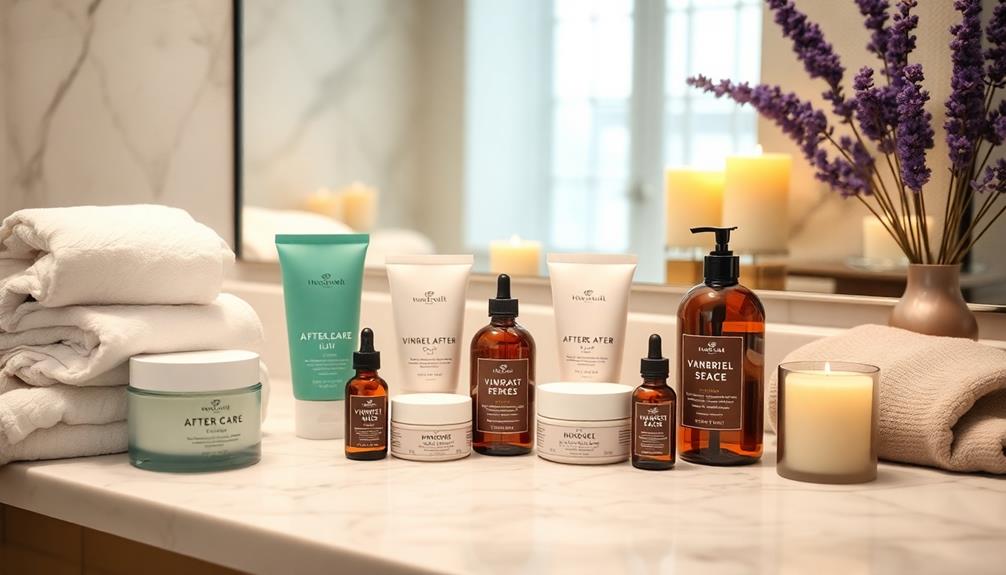
Maintaining the vibrancy of your tattoo goes hand in hand with choosing the right aftercare products. You want to keep your tattoo moisturized and protected, so here are three of the best tattoo aftercare products you should consider:
- Hustle Butter Tattoo Aftercare: This all-natural balm is perfect for all skin types, thanks to its non-comedogenic properties. With over 22,800 five-star reviews, it's a go-to for many tattoo enthusiasts.
- CeraVe Healing Ointment: Ideal for those with sensitive skin, this ointment helps restore moisture and repair the skin barrier after getting inked. It boasts a 4.8-star average from over 9,200 ratings, making it a trusted choice.
- Mad Rabbit SPF 30 Tattoo Sunscreen: Protect your tattoo from harmful UV rays with this unscented mineral sunscreen. With a solid 4.6-star rating from over 1,250 reviews, it guarantees your tattoo remains vibrant long-term.
Don't forget to clean your tattoo with Dial Antibacterial Liquid Hand Soap—its antibacterial properties guarantee your healing tattoo stays safe and clean.
Frequently Asked Questions
What Products Can I Use for Tattoo Aftercare?
For tattoo aftercare, try Hustle Butter for moisture, Dial Antibacterial Soap for gentle cleaning, and CeraVe Healing Ointment to restore your skin barrier. Avoid heavy products like Aquaphor and Vaseline to prevent issues.
What Can I Use Instead of Tattoo Aftercare?
You're not stuck with boring aftercare options! Immerse yourself in nature's treasure chest—use coconut oil, honey, or aloe vera gel. These magical remedies soothe, heal, and protect your art better than anything else out there!
What Lotion Not to Use on a New Tattoo?
You shouldn't use Aquaphor, petroleum jelly, or fragranced lotions on your new tattoo. Heavy ointments trap dirt, while alcohol-based moisturizers can irritate. Avoid Neosporin too; it might cause allergic reactions and complications during healing.
Is Aquaphor Good for Tattoo Aftercare?
You might think Aquaphor's a go-to for tattoo aftercare, but wait—its heavy, occlusive nature could actually hinder healing. Instead, consider lighter, breathable alternatives that help your ink look vibrant and your skin stay healthy.
Conclusion
In summary, choosing the right aftercare products is essential for your tattoo's longevity and appearance. While you might think any soap or moisturizer will do, using recommended products can make all the difference in healing. Some may argue that high-quality items are too expensive, but investing in your tattoo's health is worth every penny. By prioritizing proper care, you not only preserve your art but also guarantee it looks vibrant for years to come.
Hi, my name is Danielle, and I’m an author for piercings-body.com. I have a passion for writing and love to share my knowledge on all things body piercing-related. I’m also a huge advocate for safe body modification practices and believe everyone should be able to make informed decisions about their bodies. When I’m not writing or blogging, I enjoy spending time with my family and friends, practicing yoga, and exploring new places.

